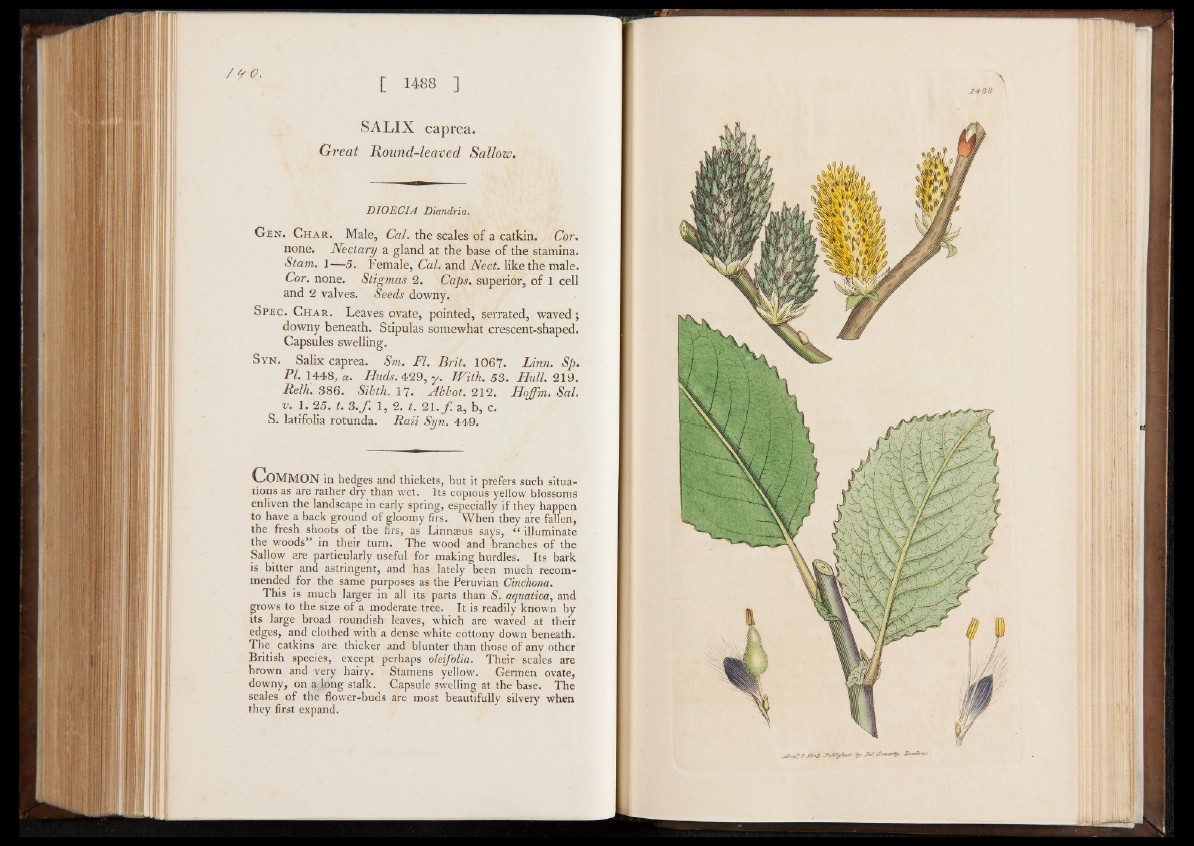
/ 4 o.
[ 1 488 ]
S A L IX c a p re a .
Great Round-Cleaved Sallow.
DIOECIA Diandria.
G en. Char. Male, Cal. the scales of a catkin. Cor.
none. Nectary a gland at the base of the stamina.
Stam. 1-— 5. Female, Cal. and Nect. like the male.
Cor. none. Stigmas 2. Caps, superior, of 1 cell
and 2 valves. Seeds downy.
Spec. Ch a r. Leaves ovate, pointed, serrated, waved ;
downy beneath. Stipulas somewhat crescent-shaped.
Capsules swelling.
Syn. Salix caprea. Sm. FI. Brit. 1067. Linn. Sp.
PL 1448, «. Ilnds. 429, y. With. 53. Hull. 219.
Relh. 386. Sibth. 17. Hbbot. 212. Hoffm. Sal.
v. 1. 25. t. 3. f II 2. t. 21. f a, b, e.
S. latifolia rotunda. Rail Syn. 449.
COMMON in hedges and thickets, but it prefers such situations
as are rather dry than wet. Its copious yellow blossoms
enliven the landscape in early spring, especially if they happen
to have a back ground of gloomy firs. When they are fallen,
the fresh shoots of the firs, as Linnaeus says, “ illuminate
the woods” in their turn. The wood and branches of the
Sallow are particularly useful for making hurdles. Its bark
is bitter and astringent, and has lately been much recommended
for the same purposes as the Peruvian Cintihona.
This is much larger in all its parts than S. aquatica, and
grows to the size of a moderate tree. It is readily known by
its large broad roundish leaves, which are waved at their
edges, and clothed with a dense white cottony down beneath.
The catkins are thicker and blunter than those of any other
British species, except perhaps oleifolia. Their scales are
brown and very hairy. Stamens yellow. Germen ovate,
downy, on a long stalk. Capsule swelling at the base. The
scales of the flower-buds are most beautifully silvery when
they first expand.